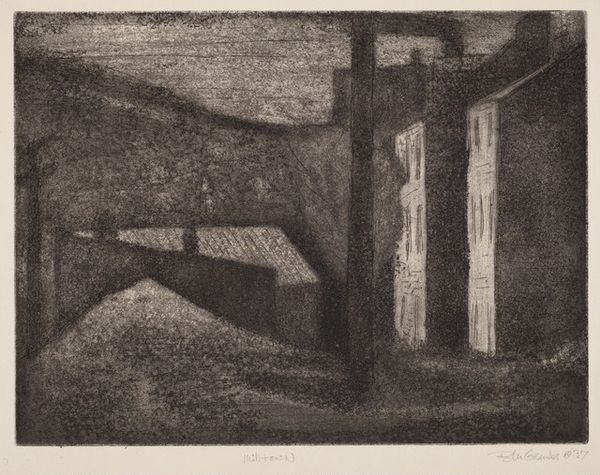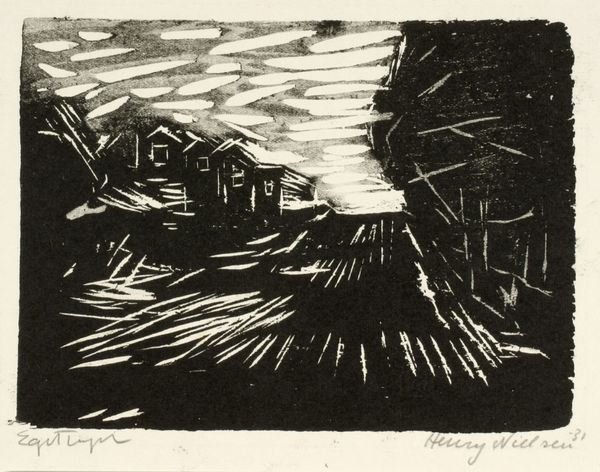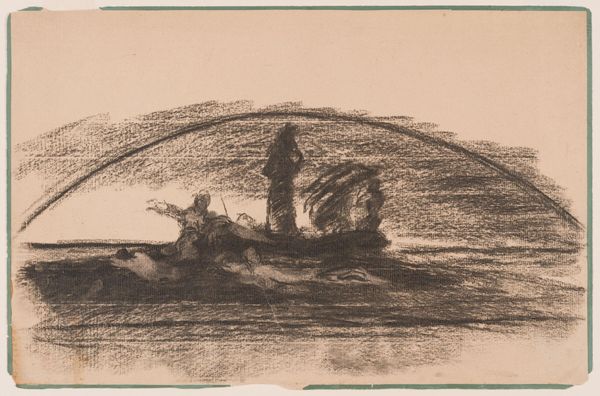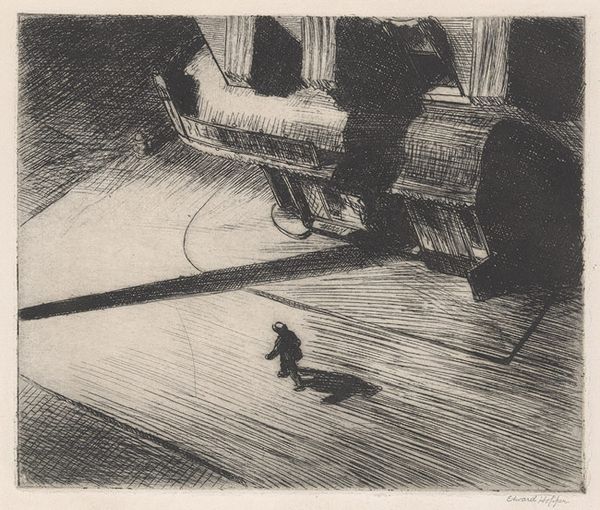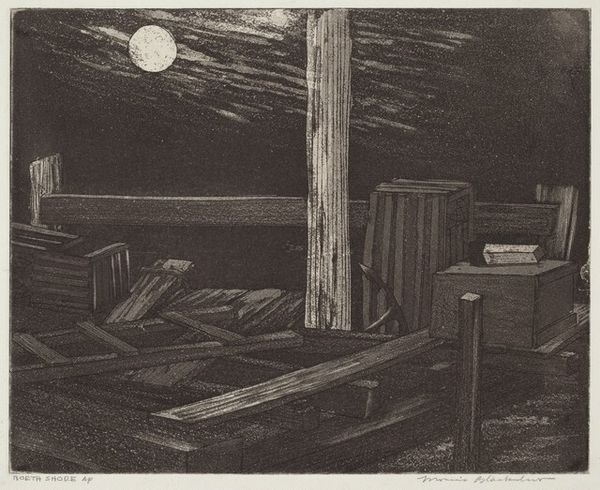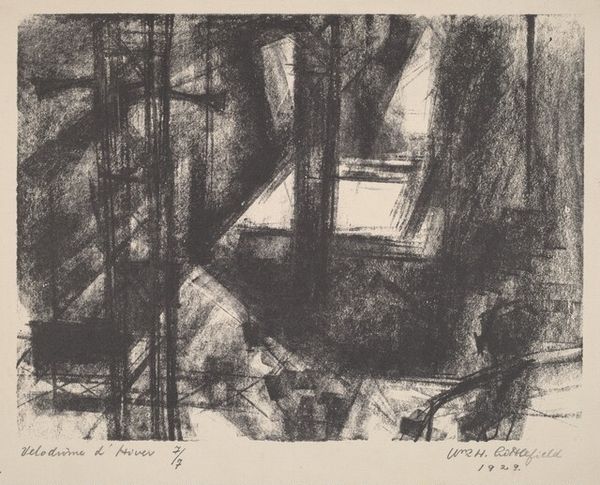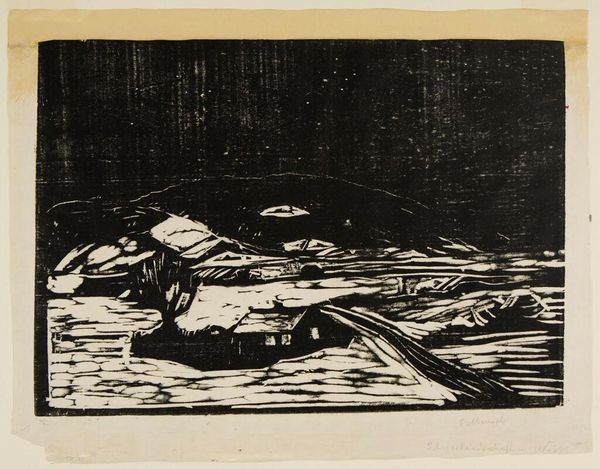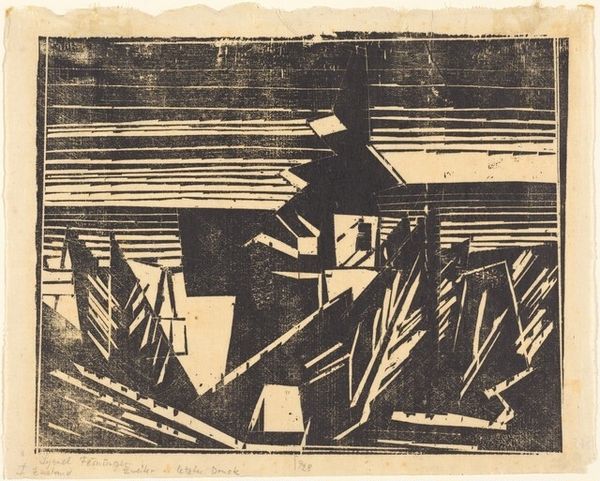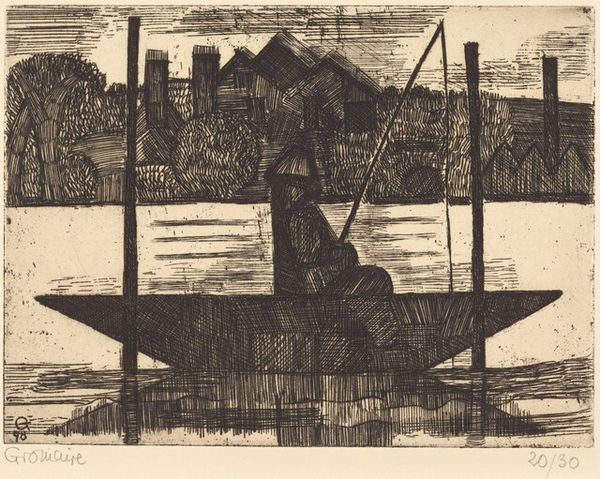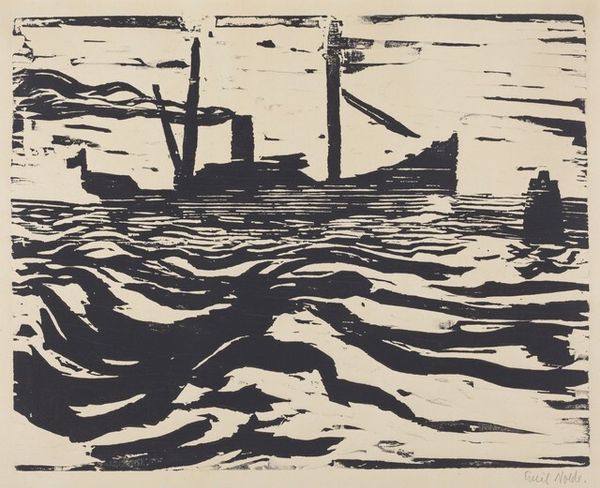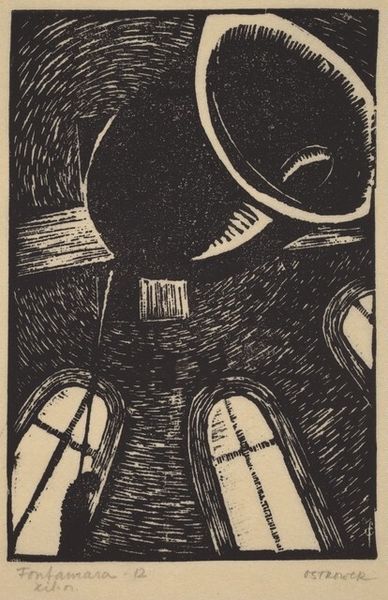
print, etching, woodcut
#
ink painting
# print
#
etching
#
landscape
#
etching
#
german-expressionism
#
figuration
#
woodcut
#
carved
Dimensions: sheet: 15.7 x 21.7 cm (6 3/16 x 8 9/16 in.) [irregular] plate: 11.9 x 17 cm (4 11/16 x 6 11/16 in.) mount: 18.3 x 24 cm (7 3/16 x 9 7/16 in.)
Copyright: National Gallery of Art: CC0 1.0
Curator: Immediately striking! The solid mass of the boat practically consumes the scene. Editor: We are looking at "Dammbauerboote auf der Elbe," a print crafted in 1906 by Fritz Bleyl. As the title suggests, it presents a view of boats on the Elbe River, executed as an etching and woodcut, media well-suited to Bleyl’s exploration of form. Curator: It's so stark, so definite. That heavy, almost ominous black shape of the boat sits so low in the water… It makes me think about burdens and the weight of labor. The glowing rectangles of light from the boat windows punctuate the darkness, feeling both hopeful and isolated. Editor: Consider how Bleyl used woodcut techniques to render this nocturnal scene, hacking away material to form a graphic landscape. There's the repetitive manual effort, almost a monotony embedded within the final aesthetic. The grainy quality in the light above might be from how the ink caught on the wood. Curator: I see the influence of Expressionism here. The way Bleyl emphasizes feeling and emotion. The harsh contrast creates tension and emphasizes the weight of industrial life along the river. These dark boats take on a symbolic charge, beyond simple representation. Is it simply documentary or does it mean more? Editor: Bleyl was briefly associated with Die Brücke. Although they prioritized painting, these printmaking techniques—etching, woodcut—served the group’s aims by ensuring images could be widely distributed. Bleyl, alongside artists like Kirchner, was trying to circumvent the established marketplace to reach a bigger, broader audience through inexpensive media. Curator: It almost has the feeling of a shadow puppet performance. These vessels feel caught in some psychological drama being played out across the landscape. Editor: Indeed, what started as simple means of production becomes a language through which anxiety is writ large in material terms. The availability of etching and woodcut facilitates and feeds a particular visual language we now recognize as Expressionist. Curator: Ultimately, this etching feels surprisingly contemporary. Its raw expressiveness and bold graphic sensibility retain their symbolic power. Editor: Absolutely, and hopefully by highlighting some aspects of material reality and means of its production we get a little bit closer to understanding its place within the complex story of German Expressionism.
Comments
No comments
Be the first to comment and join the conversation on the ultimate creative platform.


